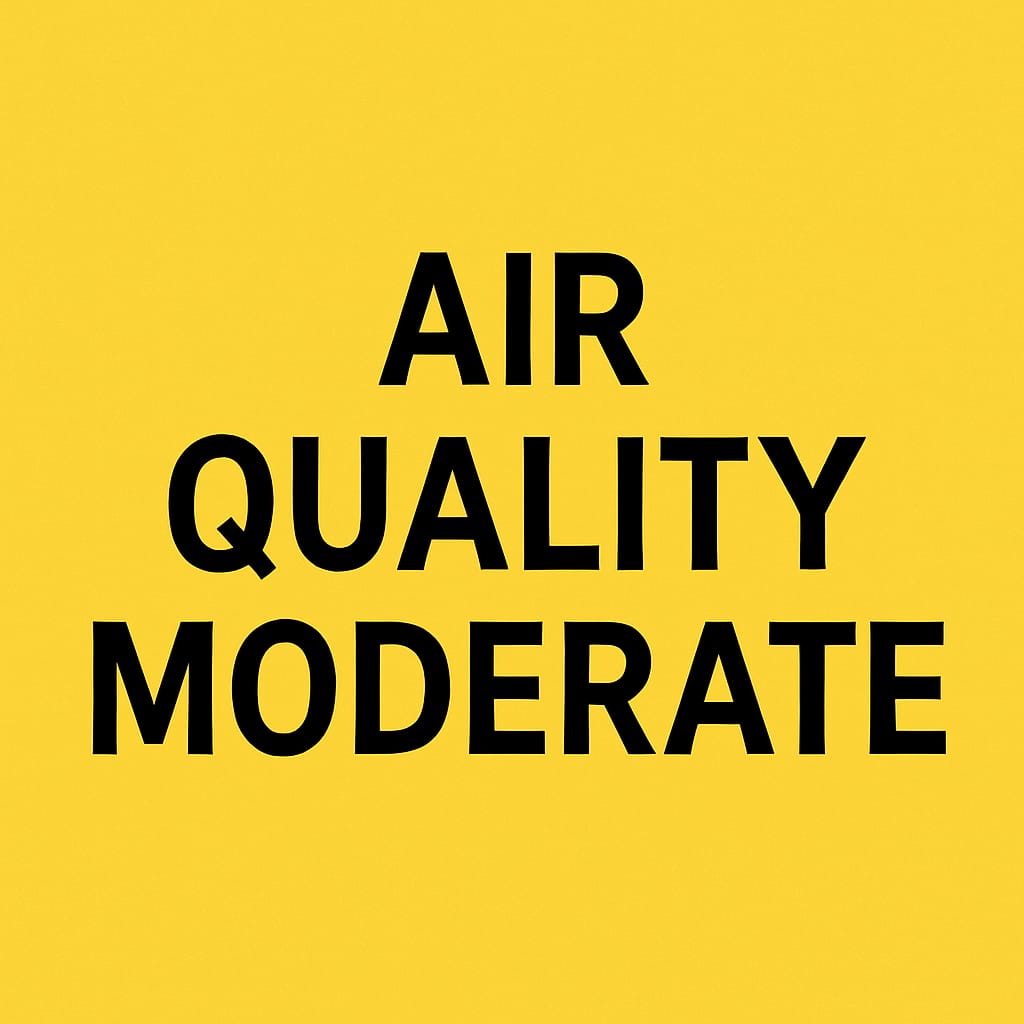
Air Quality Bulletin
Antigua and Barbuda Meteorological Services
4:15 pm Monday 11 August 2025
Air Quality Index Based on Particulate Matter 2.5 (PM2.5) and 10 (PM10) Concentration
Air quality category: Moderate
Location: Antigua and Barbuda
Timing: Late tonight until Wednesday
Synopsis: The air quality is to fall to moderate levels due to particulate matter 2.5 and 10, associated with the seventeenth notable surge in Saharan Dust for the Country for 2025. The health risk will be low for most people; however, unusually sensitive people such as asthmatics need to be aware of potentially poor air quality and keep up with the latest forecasts.
Air quality index: 51 to 80
Air Pollution (Alert) Level: II
Sensitive groups: People with respiratory or heart disease, the elderly and children are the groups most at risk.
Health implications: Air quality is acceptable; however, for some pollutants, there may be moderate health concerns for a very small number of people who are unusually sensitive to air pollution.
Caution: Active children and adults, and people with respiratory diseases, such as asthma, should limit prolonged outdoor exertion.
Stay tuned to updates from the Meteorological Service via antiguamet.com, X (Twitter), Facebook, YouTube and Instagram @abmetservice. Also, stay tuned to ABS Radio and TV and other media platforms for updates.
Dale Destin
Advertise with the mоѕt vіѕіtеd nеwѕ ѕіtе іn Antigua!
We offer fully customizable and flexible digital marketing packages.
Contact us at [email protected]


















The least these journalists can do is further explain what all these terms mean cause we don’t know what a PM means
The air quality in your country is expected to fall to moderate levels due to the seventeenth notable surge of Saharan Dust for the year 2025. This is attributed to an increase in particulate matter, specifically PM2.5 and PM10.
Here is a breakdown of what that means:
* Saharan Dust: This is a mineral dust from the Sahara Desert, which is carried across the Atlantic Ocean by wind. It’s a natural phenomenon that can affect air quality in regions thousands of miles away.
* Particulate Matter (PM): This refers to a mixture of solid particles and liquid droplets in the air. The numbers 2.5 and 10 refer to the size of these particles in micrometers.
* PM10: These are inhalable particles with diameters of 10 micrometers or less. They are small enough to get into your lungs and can cause respiratory issues.
* PM2.5: These are fine, inhalable particles with diameters of 2.5 micrometers or less. They are so small that they can travel deep into the lungs and even enter the bloodstream, posing a greater health risk.
* Health Concerns: The presence of these fine particles can be particularly hazardous for sensitive groups, including young children, the elderly, and individuals with pre-existing respiratory conditions like asthma and COPD. The dust can trigger or worsen respiratory symptoms, leading to coughing, shortness of breath, and chest discomfort.
Given the forecast, it is advisable for vulnerable individuals to take precautions, such as limiting outdoor activities and wearing a face mask if they need to be outside.
Comments are closed.